- Eight rarely spoken facts about Ambedkar/Buddhism. Why did he not want his followers to become Sikh, Muslims or Christians? Who is a Neo Buddhist? What Vows do Ambedkarites take? What is Truth about Caste? Conversion is an alien concept for Bharatiyas.
The
unfortunate throwing of a shoe at Chief Justice Gavai has erupted into a
controversy because of what he spoke in Court. Political parties like Bahujan
Samaj organised huge meetings in Lucknow. Media told us that CJI is a Dalit, Buddhist
and was Scheduled Caste just like R Kishore who threw the shoe. But, Neo
Buddhist!
At
the outset, I must state that am a fan of Dr Ambedkar (BRA) because of his understanding of
the sub-continent Muslim mind.
Who is a Neo Buddhist in short?
A Professor of Buddhist Philosophy in Maharasthra says, “Neo-Buddhists are those who converted to Buddhism under the leadership of Dr Ambedkar. They are Buddhists, but with a clear focus on social justice. They take vows which Ambedkar wrote out, renouncing Hindu Gods and rituals, dedicating themselves to the Buddhist path instead.” BRA said that his Buddhism would be a sort of neo-Buddhism/Navayana. BRA renounced the Puranas but Upanishads not sure!
Two commonly
used words today are Dalit and Scheduled Caste. The former is a post 1990
construct i.e. not mentioned in the Constitution. The words SC entered Indian
discourse when introduced in the Government of India Act, 1935. BRA said he
belonged to the Depressed Classes. Read History of word Dalit Word Scheduled Tribe entered the Indian
discourse around 1950.
The
first draft of the Constitution was presented in October 1947 by Sir B N Rau.
BRA was honest enough to admit that the Drafting Committee had borrowed from
the GOI Act 1935/other world constitutions. Source
Buddhism is seen as separate from Hinduism mainly in India. Read How Hindu and Buddhist are intertwined in Thailand, Cambodia
and Japan
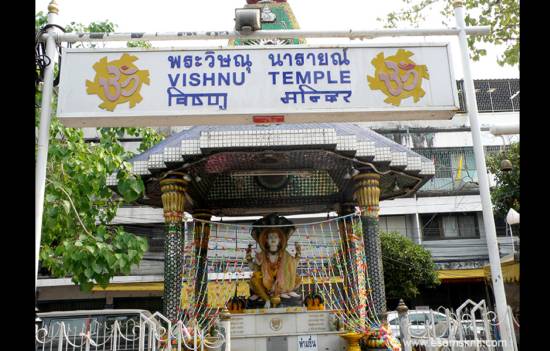 Vishnu Temple in Buddhist majority Thailand. 2009.
Vishnu Temple in Buddhist majority Thailand. 2009.
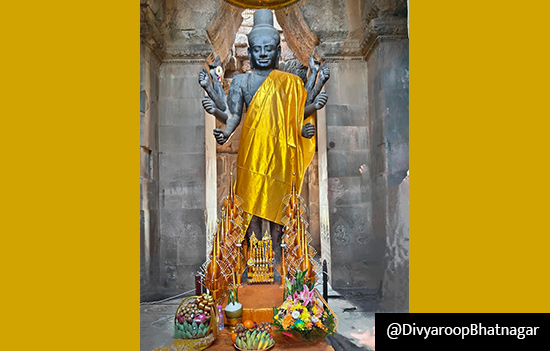 Vishnu Bhagwan murty in Angkor Wat, Cambodia. 2023
Vishnu Bhagwan murty in Angkor Wat, Cambodia. 2023
Before getting into the details, did
you know that?
1. For many Maharashtrians the surname comes from name of the village, as it does in many parts of India. Since BRA’s ancestral village was Ambavade (Ratnagiri), his surname should have been Ambavadekar. But it is Ambedkar.
2. A
Brahmin teacher in the High School, whose surname was Ambedkar, took such a
liking to Bhim that he changed his surname to his own Ambedkar, in the schools
records. 1 BRA belonged to the Mahar
community.
3. Col Anil Athale (retd) wrote in, The Legacy of Shivaji the Great, “MAHARS, regarded as untouchables, played role of village guards and so found easy acceptance in Shivaji army. They manned the intelligence gathering and communication and were called HARKARAY.”
4. Who introduced
BRA to Maharaja Sayajirao Gaikwad?
Krishna A Keluskar, former Principal of Wilson High School. Post meeting BRA Sayajirao announced scholarship of Rs 25 per mensem for BRA’s education at Elphinstone College, Mumbai. 1 Pg. 21 Keluskar’s are Hindu Gavali (Yadavs).
Raja Shahu of
Kolhapur supported BRA in 1920 that helped him complete his studies in Law and
Economics at London. Read About BRA Education
5. BRA’s second wife, a doctor, was a Brahmin. Dhananjay Keer wrote in Life and Mission of Dr
Ambedkar, “He felt the need for a companion who would attend to him in his old age hence Savita Kabir.” 1 Pg. 402 They got
married in 1948. She was 39 and he 57. Read
Ambedkar and Brahmins
6. Indic Scholar Sri Prabhav Paturi wrote in Concept
of Atheism in Samkhya and Buddhist Philosophy that the 4 Noble Truths of Buddhism were echoes of Rishi Kapila’s original wisdom according to former scholar President Dr.
Radhakrishnan writings in Indian
Philosophy (1923). “The profound four-fold framework that Sage Kapila had already crystallized in the Samkhyapravacanabhasya – from the recognition of suffering, to the path of liberation, through the subtle understanding of prakrti and purusha, to the supreme discriminating wisdom – would later find a simplified reflection in Buddhist teachings.”
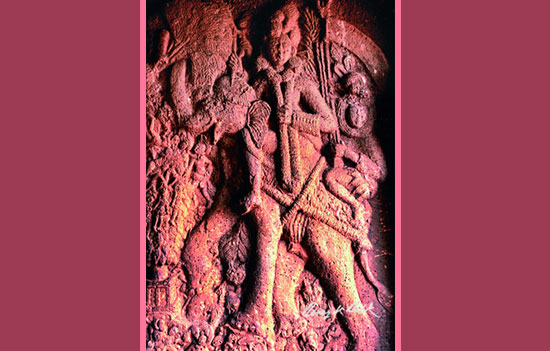 Earliest depiction of Lord Indra in Bhaja Cave, Maharashtra. Pic Benoy K Behl.
Earliest depiction of Lord Indra in Bhaja Cave, Maharashtra. Pic Benoy K Behl.
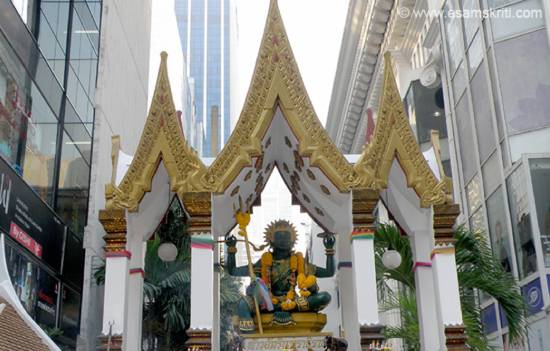 Lord Indra Temple, Sukumwit Street, Bangkok.
Lord Indra Temple, Sukumwit Street, Bangkok.
Lord
Indra considered a Hindu God in India, is worshipped by Buddhists of Thailand. Read
Lord Indra in
Buddhism
Indra’s weapon, the vajra (thunderbolt), is the principal symbol of Tibetan Buddhism.
Senior Journalist
Sandhya Jain wrote, “Yet this canard of Buddhism at daggers drawn with Hindu dharma is being invoked to instigate caste tensions.”
7. Untouchability
was practiced more in South than North India and was a key parameter used by
British to determine who is SC according to a
2024 Supreme Court order.
8. Anu Malhotra
wrote in Shamans of the Himalayas about Goor Tuleramji whom she met in Manali, “I am quite intrigued that the all-important role of being ‘a vehicle of the divine’ is performed by a persons of low caste who are imputed to be untouchable.”
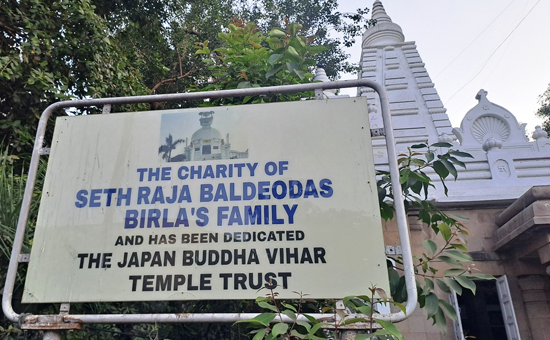 Buddhist Temple, result of charity of a Hindu. At Worli, Mumbai.
Buddhist Temple, result of charity of a Hindu. At Worli, Mumbai.
Why did BRA become a Buddhist, not Muslim/Christian or even
Sikh?
At the Yeola Conference in 1935 BRA said, “I solemnly assured you that I will die a Hindu.” 1 Pg. 255
Sikh – In 1936 BRA sent a group of followers to the Sikh
Mission at Amritsar to study Sikh religion. They were a group of 13, none of
whom was a scholar or a first rate Ambedkarite. In an excess of zeal those
students went over to Sikhism & did what their leader did not mean. They
were coldly received in Bombay and then sank into oblivion. 1
Also after the definition of who is a Sikh in the Gurudwaras Act 1925, the Depressed Classes would post becoming Sikhs have to sport the 5 forms of Khalsa–turban, kada etc. Would Ambedkar’s followers wear turbans and give up Marathi for Punjabi!
Christianity – “In 1938, he told Christians in Sholapur that their co-religionists in South India observed caste system in Churches. Indian Christians never fought for the removal of social injustice. 1 Pg. 299/300
Buddhism – In a May 1956 broadcast titled Why I like Buddhism and how it is
useful to the world in its present circumstances he said, I prefer Buddhism
because it gives three principles that no other religion gives, one it teaches prajna (understanding as against
superstition & supernationalism), karuna
(love), and samata (equality). 1 Pg. 490
On
14/10/1956, BRA wrote to D Valisinha expressing desire that Mahabodhi Society
of India should participate in the function. He informed him that he had no
idea what rituals were although he had framed an important formula of a series
of vows to be taken at the time of Dhamma
Diksha Ceremony. 1 Pg. 496
BRA
said that his Buddhism would be a sort of neo-Buddhism or Navayana. 1
BRA told Gandhi once, “‘I will choose only the least harmful way for the country. And that is the greatest benefit I am conferring on the country by embracing Buddhism, for Buddhism is a part &
parcel of Bharatiya culture. I have taken care that my conversion will not harm
the tradition of the culture & history of this land.’ 1 Pg. 498
During
the conversion ceremony BRA and his wife, were bowing before the image of
Buddha, three Sarans under Buddha,
Dhamma and Sangha and Panchsheel of five precepts of absenteeism from killing,
stealing, telling lies, wrongful sex life and drink. 1 Pg. 500
With this BRA had become a Buddhist and declared, “By discarding my ancient religion which stood for inequality & oppression today I am reborn. I have no faith in the philosophy of incarnation, and it is wrong & mischievous to say that Buddha was an incarnation of Vishnu. I am no more a devotee of any Hindu god or goddess. I will not perform Shraddha. I will strictly follow the eightfold path of Buddha. I will lead a life guided by the three principles of knowledge, right path & compassion.” 1 Pg. 500
Responding to BRA’s conversion, Veer Savarkar, who defined a Hindu as one whose fatherland and holy land was India, said Buddhist BRA was Hindu BRA. He concluded, “It may be noted that a leaflet issued on this occasion by Mahasthavir Chandramani & other Bhikkus said on this occasion that Hinduism & Buddhism were branches of the same tree. 1 Pg. 503
“The Maha Bodhi, a famous Buddhist journal in India opined that in The Buddha and His Dhamma, BRA’s interpretation of the theory of Karma, Ahimsa & that Buddhism was merely a social system, constituted not the correct interpretation of Buddhism but a new orientation.” 1 Pg 521
For BRA, it was social reform and political mobilization. That
is why Buddhist critics say that the Dhamma preached by BRA is not Buddhism but
Ambedkarism. 1 Pg 523
Conversion
is an alien concept for Bharatiyas?
Conversion
amongst Indic faiths is alien. Indic followers have freedom to follow any
school that originated in Bharat. I have friends who are devout Jains but
worship Sri Krishna and are Vaishnavs. So also, many Hindu Sindhis worship Guru
Nanak. Conversion is a Middle East religion concept, essentially Islam and
Christianity. Read Comparing Indic vs. Abrahamic Faiths – A Primer
Certain common
thoughts bind Indic faiths. Pandit Rajmani Tugnait, spiritual head of the
Himalayan Institute, outlined these in his book Seven Systems of Indian Philosophy. They are, “direct experience, acceptance of authority, harmony amongst schools, parallel growth and co-existence of many schools, open mindedness, support of logic and reasoning, belief of eternity, law of karma, moral and ethical teachings, acknowledgement of suffering, thoroughness, practicality and being inward looking” were common characteristics. Read Characteristics of Indian Philosophy
What
vows did BRA take whilst becoming Buddhist?
This ThePrint article lists 22 vows taken by BRA. Also read Here These are against Puranic Hinduism, do not have faith in reincarnation of God, Buddha was not an avatar of Vishnu, I shall follow the Eightfold path as told by the Buddha, shall practice ten Paramitas as told by the Buddha etc.” One of the vows taken by Ambedkartes is, “I shall not consider Brahma, Vishnu and Mahesh as God nor shall I worship them.”
What is the eight-fold path as told by Buddha?
According to Tricycle.org, “Within the fourth noble truths is found the guide to the end of suffering: the noble eightfold path. The eight parts of the path to liberation are grouped into three essential elements of Buddhist practice—moral conduct, mental discipline, and wisdom.” Also read The Eightfold Path here
As stated above, the four noble truths have their
origins in Samkhya philosophy.
Discussion
with an Ambedkarite friend
The goal of Buddha was Samadhi. BRA’s goal was Karuna (compassion). We do not follow Buddhist scholar Nagarjuna’s (a Brahmin) teachings and do not practice Meditation.
Buddhists say Ambedkarites belong to the Therawada School. A search indicates, “Theravada Buddhism considers the Pali Canon the most authentic and complete record of the Buddha's teachings. They view the Buddha as a human guide and role model who discovered the path to enlightenment, but they believe enlightenment must be achieved through one's own efforts, not through the help of gods. The ultimate goal for a Theravada practitioner is to become an arhat, a ‘worthy person’. Theravada Buddhism is the dominant form of Buddhism in several Southeast
Asian countries, including Sri Lanka, Myanmar, Thailand, Cambodia, and Laos.” See Ramayana
in Thailand & 6
days of Indic Heritage in Cambodia
He suggested reading Yashant Manohar work. A search indicates, “Yashwant Saheb views BRA as a profound & revolutionary thinker whose philosophy provides a way to overcome alienation and inequality caused by the caste system. Manohar sees BRA's ideas as crucial for human emancipation and creating an equitable society. He has written about this perspective in books, such as Tatvadnyani Dr. Babasaheb Ambedkar.”
I have a different view on the European word Caste. Thoughts -
Dr
N Padmanabhan wrote in Caste and
Social Stratification of Medieval India (Calicut University), “The word ‘caste’ owes its origin to the Spanish word ‘casta’ which means ‘breed, race, strain or a complex of hereditary qualities’. The Portuguese applied this term to the classes of people in India known by the name of ‘jati’. The English word ‘caste’ is an adjustment of the original term.”
Caste fails to capture the meaning of the Indian term, jati, which is translated as “community.” Jati in traditional India promoted and preserved diversity and multiculturalism by allotting every jati a particular space and role in society so that no jati would be appropriated or dominated by another.
It appears that the "backward" status Ambedkarites are struggling against is some ancient phenomenon. In reality, however, their cultural and economic backwardness (as distinct from their ritualistic status on specific occasions) arose post 1800. What backward caste movements are attempting to achieve is a reversal of the effects of the British policy, and restoration of the position, status, and rights of these peoples to those that existed prior to 1800.
Note that the
communities called Scheduled Castes has increased since 1950 due to vote bank
politics and communities wanting to benefit from reservations.
Myth of education denied to Sudras.
Gandhian
Dharampalji went through British and Indian archives to reproduce reports, of
surveys undertaken by the British in Bengal, Punjab and Madras Presidency
(1800-1830), in his book The
Beautiful Tree: Indigenous Indian Education in the 18th century.
According to the collectors’ reports reviewed by Governor Sir Thomas Munro on 10 March 1826, of the 30,211 male school students in Madras Presidency, 20 percent were Brahmins and Chettris, 9 percent were Vaishyas, 50 percent were Shudras, and 6 percent were Muslims. Others constituted 15 percent. Read excerpts Maximum number of
students were Sudras. BRA too went to a school, where his teacher was a Brahmin.
Read OBC Kings in India
Sant Ravidas, Guru of Rajput
Queen Mirabai, belonged to the Chamar community, now considered SC.
Why did the British find fault with Caste?
“For the British caste was a great obstacle, in fact, an unmitigated evil not because the British believed in casteless-ness or subscribed to a non-hierarchical system but because it stood in the way of their breaking Indian society, hindered the process of atomisation, and made the task of conquest and governance more difficult.” Read Caste made into
evil
and Benefits of the
Caste System
The more and more I think, the Ambedkar Movement as it exists today, is a political-socio movement. Its founders may have conceived it differently though. BSP has Elephant as a symbol. Reality is that Hindu Temples have elephants for centuries long before this movement started.
6 Kailasa Temple, Ellora in Maharashtra.
7 Dilwara Jain Temples, Mount Abu.
Read, Reflect and Decide for yourself. I have humbly shared a perspective.
References
1. Dr. Ambedkar Life and Mission’ by Dhananjay Keer.
Also read
1.
Samkhya and
Buddhism
2.
A SAKTA Critique
of the VAJRAYANA Conception of Tantra
3.
Ambedkar erred,
Buddha was a Hindu
4.
Why
did Buddhism vanish from India
5.
How Hindu and
Buddhist are intertwined in Thailand, Cambodia and Japan
6.
Who drafted the
Indian Constitution and how Indian is it
7.
An
Ambedkarite Buddhist Today